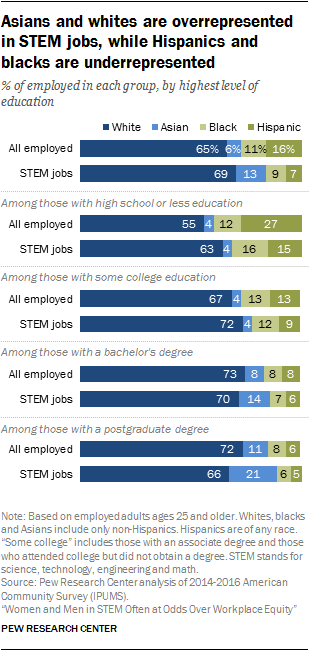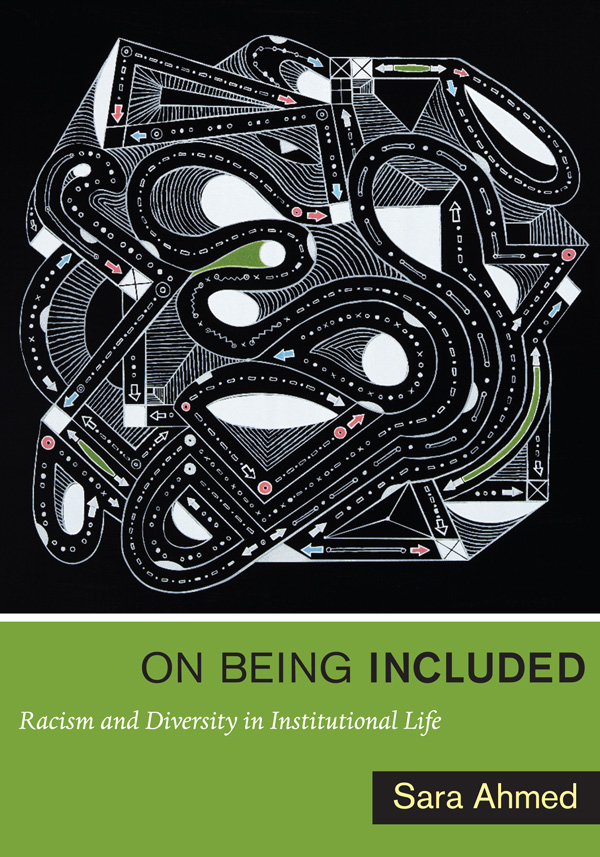Updated July 13, 2020
Equity, Diversity, and Inclusion (EDI)
Welcome to our resources page on issues related to equity, diversity, and inclusion (EDI). The HHMI IE Leadership Team is dedicated to bringing our CSULA faculty curated articles and resources about these topics. Since our HHMI IE grant was initially focusing on EDI in STEM, these articles are mostly from the STEM perspective. However, we welcome articles from all disciplines as our goal is to transform CSULA. In addition, as the recent killing of George Floyd while in police custody has cast a spotlight on issues of racial inequality, most of these articles are on race. However, we welcome articles and resources that address multiple categories of diversity, such as race, sexual orientation and gender. If you have something you would like to share on this page, please send it to Cecilia Zurita-Lopez: zuritalopez (at) calstatela.edu. Thank you to all those who have contributed to this page!
Resources On Campus:
We have a Vice President dedicated to issues of equity, diversity, and inclusion. Learn more about Dr. Octavio Villalpando here: /academicaffairs/diversity/about-vice-president
Learn about our students and view Dr. Villalpando's presentation on Recruitment for Diversity here.
Our award-winning Center for Effective Teaching and Learning (CETL) has resources, tools, workshops, and courses that will help you learn more. We recommend starting with: Equity and Your Classroom; Teaching First-Generation Students; and Transparency in Learning and Teaching (TILT). The Creating the Student-Centered Syllabus workshop is also excellent!
Review the Equity-Minded Checklist. Click here and scroll to the bottom to obtain a pdf which contains not only a checklist but also a LIST OF RESOURCES. This handout, created by CETL, includes links to resources such as the Implicit Association Test, developed by the Project Implicit research group: https://www.projectimplicit.net
Interestingly, according to Project Implicit, there is not enough research to suggest that implicit biases can be reduced, let alone eliminated. Packaged "diversity trainings" generally do not use evidence-based methods of reducing implicit biases. Therefore, they encourage people to instead focus on strategies that deny implicit biases the chance to operate, such as blind auditions and well-designed "structured" decision processes.
Begin by understanding the impact you make on your students. Read this article about Matthew Hubbard, a math professor at Laney College in Oakland, CA who was placed on leave after telling a student to 'anglicize' her name.
Read about ways you can boost student learning in the online platform. This paper addresses the nontraditional, adult learner, and provides simple yet practical ways to accomplish positive facilitation in the online platform.
Additional articles and books.
Gain a new perspective.
Find 'Careers Articles' written in Science Magazine (AAAS), particularly by Neil A. Lewis Jr. For an example, click here.
In this article, "The Death of an Adjunct" Adam Harris describes the experience of Thea Hunter, PhD, where people would ask her whether she was a janitor.
Find out how these topics are investigated and what studies reveal about EDI.
For example, here's an article (first page seen here)* on racial microaggressions. In addition to explaining the harmful impact of both micro- and macroaggressions, the article gives four reasons that racial microaggressions are different from "everyday rudeness." Racial microaggressions are 1) constant and continual in the lives of people of color, 2) cumulative in nature and present a lifelong burden of stress, 3) continuous reminders of the target group's second-class status in society, and 4) symbolic of past governmental injustices directed toward people of color (enslavement of Black people, incarceration of Japanese Americans, and appropriating land from Native Americans).
*
Recognize that institutions do not treat eveyrone equally.
You may have fond memories of your students, but their experiences trying to navigate CSULA and STEM disciplines may be very different. The article entitled "A Theory of Racialized Organizations" (first page seen here) replaces the notion of organizations as race-neutral with a view of organizations as constituting and constructed by racial processes that may shape both the policies of the racial state and individual prejudice.
*
Here's another study where data was analzyed from nearly all US PhD recipients and their dissertations across three decades. It finds that demographically underrepresented students innovate at higher rates than majority students, but their novel contributions are discounted and less likely to earn them academic positions. The discounting of minorities’ innovations may partly explain their underrepresentation in influential positions of academia. First page posted here.*
*
Additional Resources:
Learn from off-campus research centers who have invested decades of work on issues of EDI.
We recommend that you start with our HHMI Inclusive Excellence grant partner, the Center for Urban Education: Achieving racial equity by partnering with educational systems to change policies and practices, University of Southern California.
Read books such as On Being Included which provides an account of institutional whiteness and shows how racism can be obscured by the institutionalization of diversity. Diversity is used as evidence that institutions do not have a problem with racism. On Being Included offers a critique of what happens when diversity is offered as a solution. It also shows how diversity workers generate knowledge of institutions in attempting to transform them.
https://www.dukeupress.edu/on-being-included
How you can be an ally and support our students:
- Help our students see themselves represented in your curriculum. Include contributions by people of color in your course matrials and/or invite expert faculty of color to speak in your class. Here is a list of resources that will help you decolonize your curriculum (i.e. include diverse perspectives).
- Introduce your students to national organizations who openly celebrate diversity and are not afraid to address issues of EDI. Here's a list of STEM organizations who also emphasize EDI.
- Support programs on our campus that are dedicated to promoting diversity in STEM and beyond. For example:
- Support programs and organizations outside of campus that are dedicated to promoting diversity in academia. For example:
- Understand the particular obstacles your student of color may face as they prepare for their chosen career. Read articles that address these issues. For example, here's an article by Adam Harris, a staff writer at The Atlantic entitled "The Disciplines Where No Black People Earn PhDs."
-
Diverse educators can help reshape education. Support and encourage hiring faculty of color. Here's an article that not only stresses this point, but also stresses the importance of training faculty of color.
Get to know and support our faculty of color.
Thanks to allies like you, our faculty of color are making contributions to scholarly work, in spite of established institutional biases. Here's an article published on July 13, 2020 in the Wall Street Journal, pointing out that often, topics related to EDI are left out of top journals, effectively marginalizing such studies and their authors. Here's another article on race, ethnicity and NIH research awards, which finds that faculty of color are less likely to have their research funded by the National Instututes of Health.
Our HHMI IE Leadership Team is comprised of many faculty of color and allies who can help answer questions regarding EDI. Many are directing grants that promote diversity in STEM. Our HHMI grant also organizes training workshops on these topics. Click on the tab that says "Become an Equity Fellow in 2020" to learn more.
In addition, many of our CSULA faculty outside of the HHMI IE Leadership Team are allies, activists, and/or experts on these topics. Here are some examples:
Melina Abdullah Ph.D. in Political Science and a recognized expert on race, gender, class, and social movements. Abdullah is the author of numerous articles and book chapters, with subjects ranging from political coalition building to womanist mothering.
Kristina Ruiz-Mesa Ph.D. in Communication with a focus on organizational communication, identity, and higher education. Her work includes applied communicative practices of Chief Diversity Officers working in U.S. colleges and universities.
Also, here's an article on tips for reducing the service burden for faculty of color. Here's another article (opinion piece) written by C. Brandon Ogbunu an Assistant Professor in the Department of Ecology and Evolutionary Biology at Yale University who advocates for a critical examination of racism in science.
Finally, issues of EDI are vital to increasing the overall success of CalStateLA.
The article entitled The Miner's Canary argues that race is like the miner’s canary. Miners often carried a canary into the mine alongside them. The canary’s more fragile respiratory system would cause it to collapse from noxious gases long before humans were affected, thus alerting the miners to danger. The canary’s distress signaled that it was time to get out of the mine because the air was becoming too poisonous to breathe. Those who are racially marginalized are like the miner’s canary: Their distress is the first sign of a danger that threatens us all.

